Search Result
Results for "
Urinary bladder
" in MedChemExpress (MCE) Product Catalog:
2
Isotope-Labeled Compounds
| Cat. No. |
Product Name |
Target |
Research Areas |
Chemical Structure |
-
- HY-90010
-
|
Kabi-2234; PNU-200583E
|
mAChR
|
Neurological Disease
|
|
Tolterodine Tartrate (Kabi-2234; PNU-200583E) is a potent muscarinic receptor antagonist and shows selectivity for the urinary bladder over salivary glands in vivo.
|
-

-
- HY-116408A
-
|
|
mAChR
Calcium Channel
|
Neurological Disease
|
|
Propiverine hydrochloride is a bladder spasmolytic with calcium antagonistic and anticholinergic properties. Propiverine hydrochloride can be used for the research of overactive blaqdder and urinary incontinence .
|
-
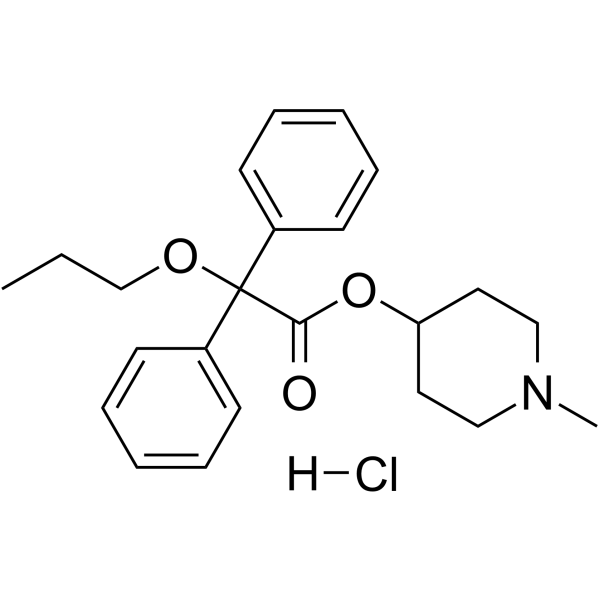
-
- HY-19933
-
|
MK-4618
|
Adrenergic Receptor
|
Others
|
|
Vibegron (MK-4618) is a potent, highly selective and orally active β3-adrenoceptor agonist (EC50=1.1 nM). Vibegron can be used for severe urgency urinary incontinence related to overactive bladder .
|
-

-
- HY-114865
-
|
|
RGS Protein
Calcium Channel
|
Neurological Disease
|
|
BMS-192364 is targeting the Gα-RGS interaction to produce an inactive Gα-RGS complex. BMS-192364 reduces urinary bladder contraction and exert RGS-agonist properties by increasing the action of GAPs on Gq proteins. BMS-192364 inhibits calcium flux .
|
-
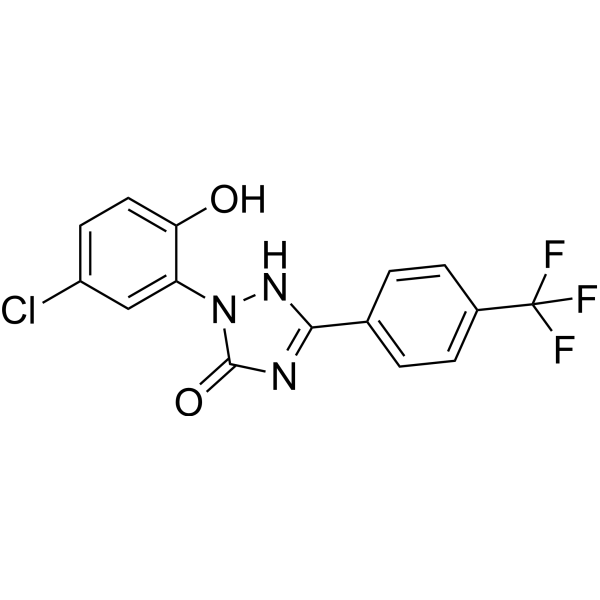
-
- HY-116408
-
|
|
mAChR
|
Neurological Disease
|
|
Propiverine is a potent antimuscarinic agent. Propiverine inhibits cellular calcium influx, thereby diminishing muscle spasm. Propiverine has neurotropic and musculotropic effects on the urinary bladder smooth muscle. Propiverine can used for overactive bladder (OAB) research .
|
-
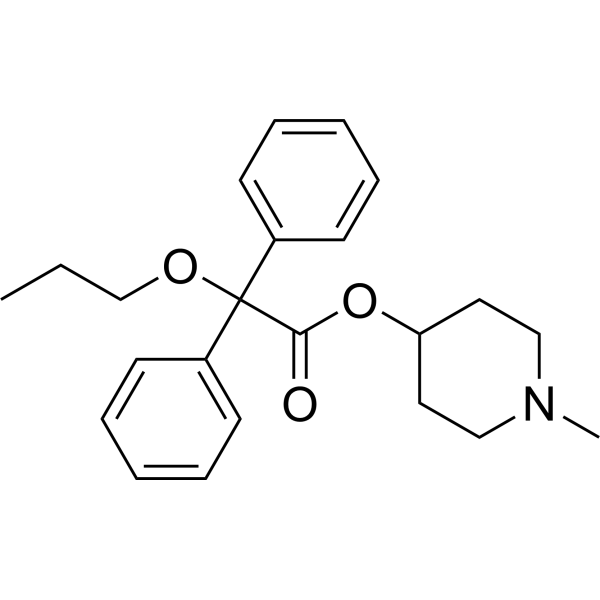
-
- HY-148252
-
|
|
Adrenergic Receptor
|
Endocrinology
|
|
ADRA1D receptor antagonist 1 (free base) (compound (R)-9s) is an orally active, potent and selective human α1D-adrenoceptor (α1D-AR) antagonist (Ki=1.6 nM). ADRA1D receptor antagonist 1 (free base) dose-dependently inhibits bladder contraction with an IC30 value of 15 nM. ADRA1D receptor antagonist 1 (free base) can be used in studies of overactive bladder disorders such as urinary urgency, frequency and incontinence.
|
-
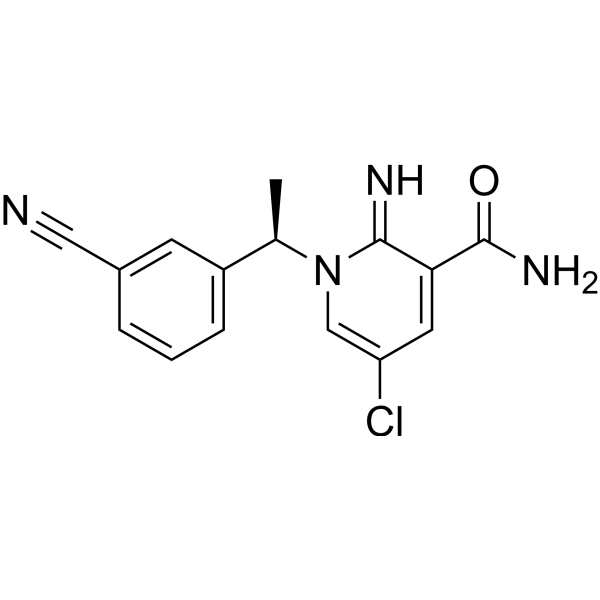
-
- HY-B0549A
-
|
Rec-7-0040; DW61
|
Phosphodiesterase (PDE)
Calcium Channel
mAChR
|
Neurological Disease
|
|
Flavoxate hydrochloride is a potent and competitive phosphodiesterase (PDE) inhibitor. Flavoxate hydrochloride is an antispasmodic agent and muscarinic mAChR antagonist. Flavoxate hydrochloride shows moderate calcium antagonistic activity and local anesthetic effect. Flavoxate hydrochloride can be used for the research of overactive bladder (OAB) and lower urinary tract infections .
|
-
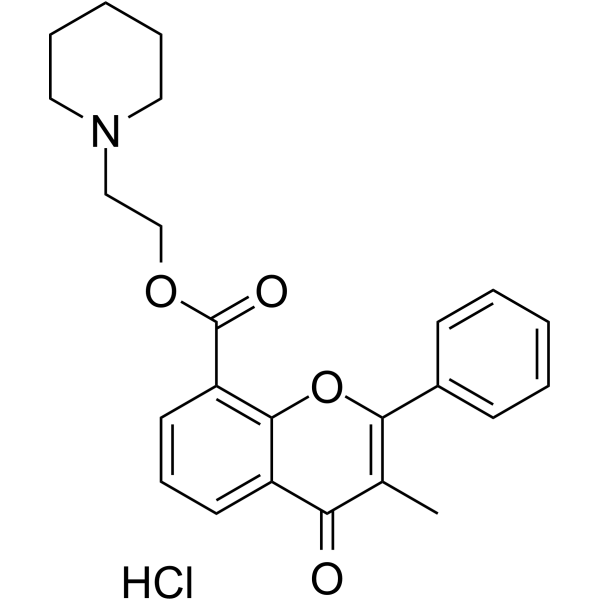
-
- HY-B0549
-
|
Rec-7-0040 free base; DW61 free base
|
Phosphodiesterase (PDE)
Calcium Channel
mAChR
|
Neurological Disease
|
|
Flavoxate is a potent and competitive phosphodiesterase (PDE) inhibitor. Flavoxate is an antispasmodic agent and muscarinic mAChR antagonist. Flavoxate shows moderate calcium antagonistic activity and local anesthetic effect. Flavoxate can be used for the research of overactive bladder (OAB) and lower urinary tract infections .
|
-
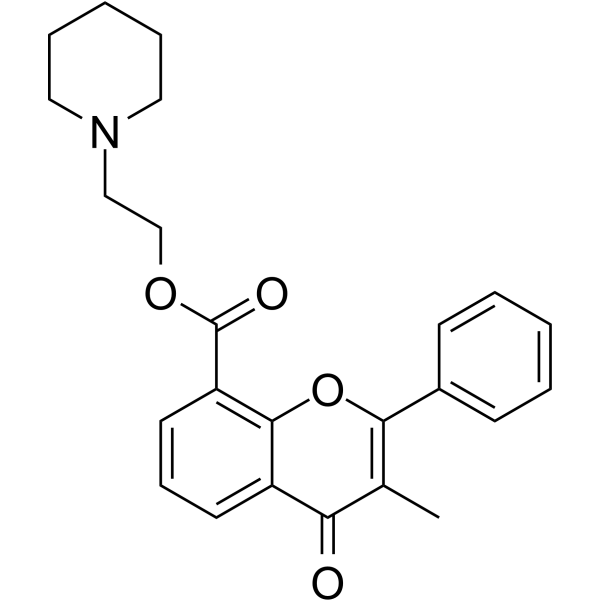
-
- HY-P5155
-
|
|
Potassium Channel
|
Neurological Disease
|
|
Stromatoxin 1 is an inhibitor of Potassium Channel, a peptide which can be isolated from tarantulas. Stromatoxin 1 selectively inhibits K(V)2.1, K(V)2.2, K(V)4.2, and K(V)2.1/9.3 channels. K(V)2.1 and K(V)2.2, but not K(V)4.2, channel subunits play a key role in opposing both myogenic and neurogenic urinary bladder smooth muscle (UBSM) contractions in rats .
|
-
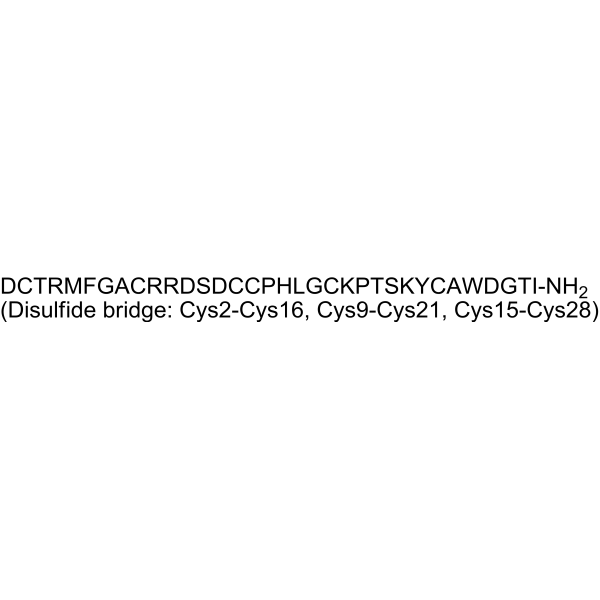
-
- HY-W010031
-
-
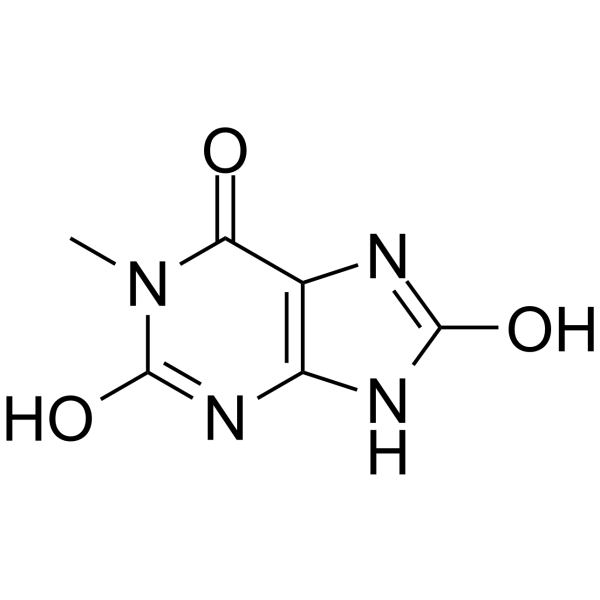
-
- HY-P1494
-
-
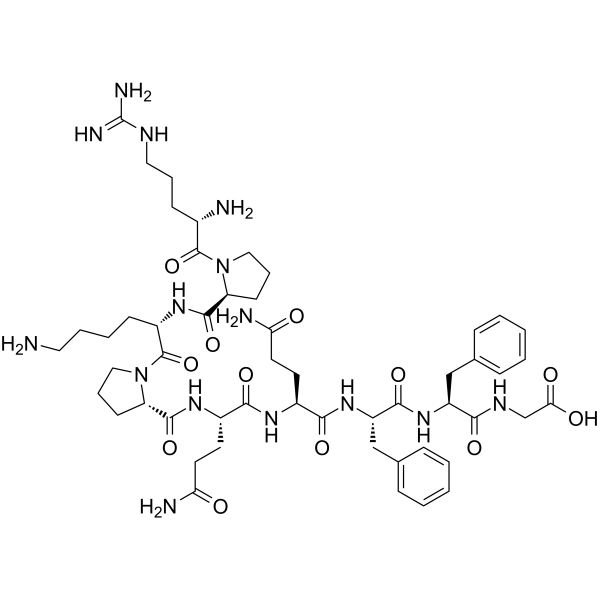
-
- HY-A0024
-
|
(R)-(+)-Tolterodine; (+)-Tolterodine; (R)-Tolterodine; PNU-200583
|
mAChR
|
Neurological Disease
|
|
Tolterodine(PNU-200583) is a potent muscarinic receptor antagonists that show selectivity for the urinary bladder over salivary glands in vivo.
|
-

-
- HY-P0004
-
|
Lysine vasopressin; [Lys8]-Vasopressin
|
Adenylate Cyclase
|
Others
|
|
Lysipressin (Lysine vasopressin) is antidiuretic hormone that have been found in pigs and some marsupial families. Lysipressin induces contraction of the rabbit urinary bladder smooth muscle, activate adenylate-cyclase .
|
-

-
- HY-116408AS
-
|
|
Isotope-Labeled Compounds
mAChR
Calcium Channel
|
Neurological Disease
|
|
Propiverine-d7 (hydrochloride) is the deuterium labeled Propiverine hydrochloride. Propiverine hydrochloride is a bladder spasmolytic with calcium antagonistic and anticholinergic properties. Propiverine hydrochloride can be used for the research of overactive blaqdder and urinary incontinence[1][2].
|
-
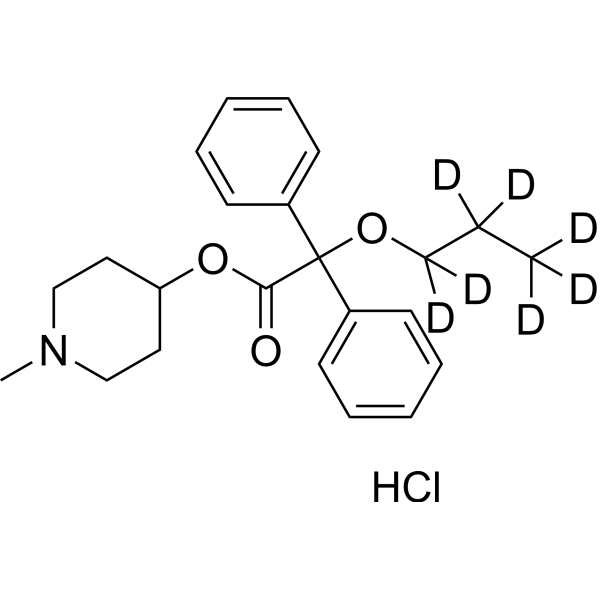
-
- HY-P0004A
-
|
Lysine vasopressin acetate; [Lys8]-Vasopressin acetate
|
Adenylate Cyclase
|
Others
|
|
Lysipressin (Lysine vasopressin) acetate is antidiuretic hormone that have been found in pigs and some marsupial families. Lysipressin acetate induces contraction of the rabbit urinary bladder smooth muscle, activate adenylate-cyclase .
|
-

-
- HY-B0860
-
|
|
|
|
|
Diuron is a phenylurea herbicide that inhibits photosynthesis by preventing the formation of ATP and NADH. Diuron (2,500 ppm, dietary) increases the incidence of urinary bladder urothelial carcinomas in male and female mice by 73 and 27%, respectively.
|
-
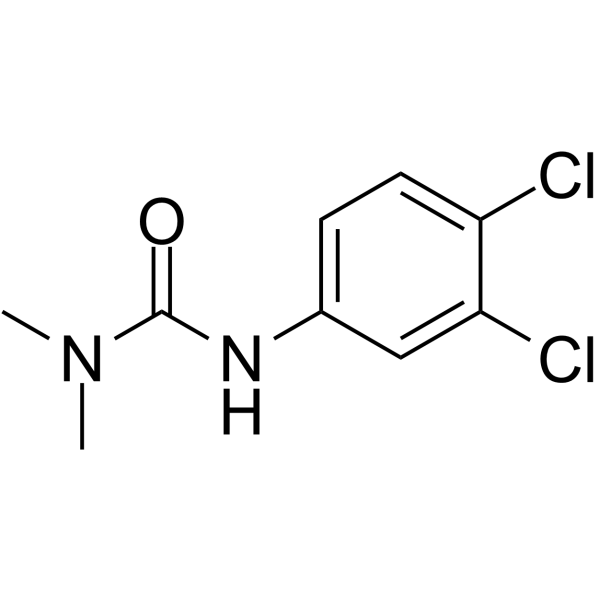
-
- HY-119419S
-
|
|
Cholinesterase (ChE)
Parasite
Isotope-Labeled Compounds
|
Others
|
|
Pirimicarb-d6 is the deuterium labeled Diuron. Diuron is a phenylurea herbicide that inhibits photosynthesis by preventing the formation of ATP and NADH. Diuron (2,500 ppm, dietary) increases the incidence of urinary bladder urothelial carcinomas in male
|
-
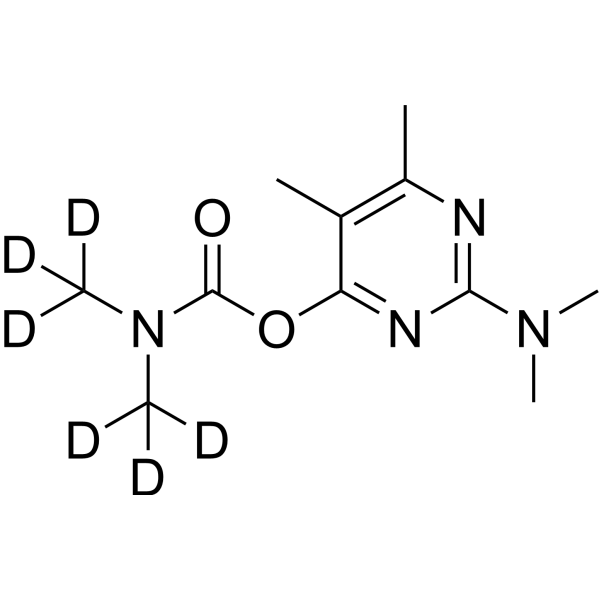
-
- HY-16489
-
|
|
Potassium Channel
mAChR
Calcium Channel
|
Metabolic Disease
|
|
Terodiline, an antispasmodic agent, blocks hERG current with the IC50 of 375 nM. Terodiline has both anticholinergic and calcium antagonist properties, and effectively reduces abnormal bladder contractions caused by detrusor instability. Terodiline can be used for the research of urinary incontinence .
|
-
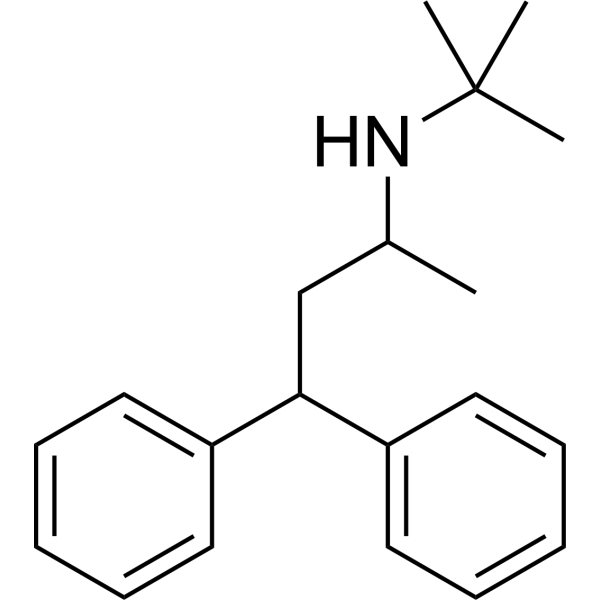
-
- HY-B0267A
-
|
|
mAChR
Potassium Channel
|
Neurological Disease
|
|
Oxybutynin chloride is an oral active and competitive mAChR antagonist with Kis of 14.3 and 5.55 nM for specific [ 3H]NMS binding in the mouse bladder and cerebral cortex, respectively. Oxybutynin chloride inhibits vascular Kv channels in a manner independent of anticholinergic effect, with an IC50 value of 11.51 μM. Oxybutynin chloride reduces muscle spasm in the bladder and urinary tract, can be used in study of overactive bladder syndrome (OAB) . Oxybutynin (chloride) is a click chemistry reagent, it contains an Alkyne group and can undergo copper-catalyzed azide-alkyne cycloaddition (CuAAc) with molecules containing Azide groups.
|
-
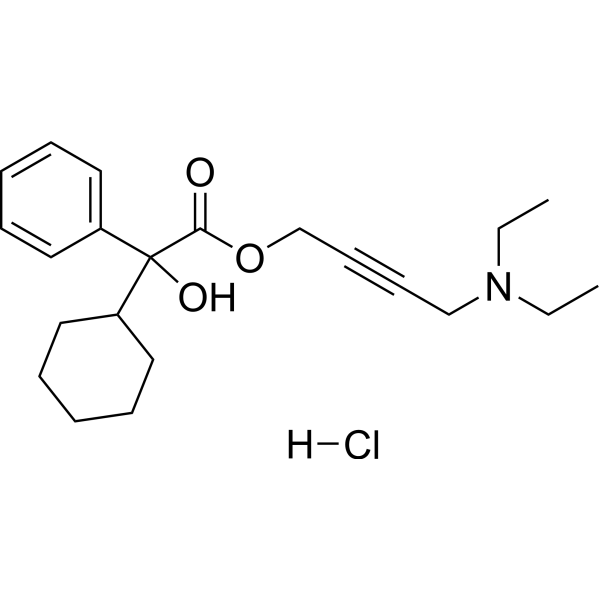
-
- HY-90010R
-
|
Kabi-2234 (Standard); PNU-200583E (Standard)
|
mAChR
|
Neurological Disease
|
|
Tolterodine (tartrate) (Standard) is the analytical standard of Tolterodine (tartrate). This product is intended for research and analytical applications. Tolterodine Tartrate (Kabi-2234; PNU-200583E) is a potent muscarinic receptor antagonist and shows selectivity for the urinary bladder over salivary glands in vivo.
|
-

-
- HY-B0267C
-
|
Aroxybutynin
|
mAChR
|
Neurological Disease
|
|
(R)-Oxybutynin (Aroxybutynin) is the racemic isomer of Oxybutynin and an orally active muscarinic receptor antagonist. (R)-Oxybutynin has antispasmodic, antimuscarinic, and anticholinergic activities and competitively antagonizes carbachol-induced contractions. (R)-Oxybutynin can be used to study urinary incontinence caused by neurogenic bladder dysfunction .
|
-

-
- HY-P3799
-
|
|
Neurokinin Receptor
|
Neurological Disease
|
|
[Glp6] Substance P (6-11) is an analogue of substance P (6-11). Substance P (6-11) stimulates [3H]-inositol monophosphate ([3H]-IP1) formation in rat urinary bladder by acting on the 'septide-sensitive' tachykinin receptors .
|
-
![[Glp6] Substance P (6-11)](//file.medchemexpress.com/product_pic/hy-p3799.gif)
-
- HY-B0267AR
-
|
|
mAChR
Potassium Channel
|
Neurological Disease
|
|
Oxybutynin (chloride) (Standard) is the analytical standard of Oxybutynin (chloride). This product is intended for research and analytical applications. Oxybutynin chloride is an oral active and competitive mAChR antagonist with Kis of 14.3 and 5.55 nM for specific [ 3H]NMS binding in the mouse bladder and cerebral cortex, respectively. Oxybutynin chloride inhibits vascular Kv channels in a manner independent of anticholinergic effect, with an IC50 value of 11.51 μM. Oxybutynin chloride reduces muscle spasm in the bladder and urinary tract, can be used in study of overactive bladder syndrome (OAB) . Oxybutynin (chloride) is a click chemistry reagent, it contains an Alkyne group and can undergo copper-catalyzed azide-alkyne cycloaddition (CuAAc) with molecules containing Azide groups.
|
-

-
- HY-P3853
-
|
|
Neurokinin Receptor
|
Neurological Disease
|
|
GR 87389 is a potent NK2 receptor antagonist. GR 87389 antagonized GA 64349-induced smooth muscle strips contractions in a competitive manner in the human detrusor, prostate and prostatic urethra .
|
-
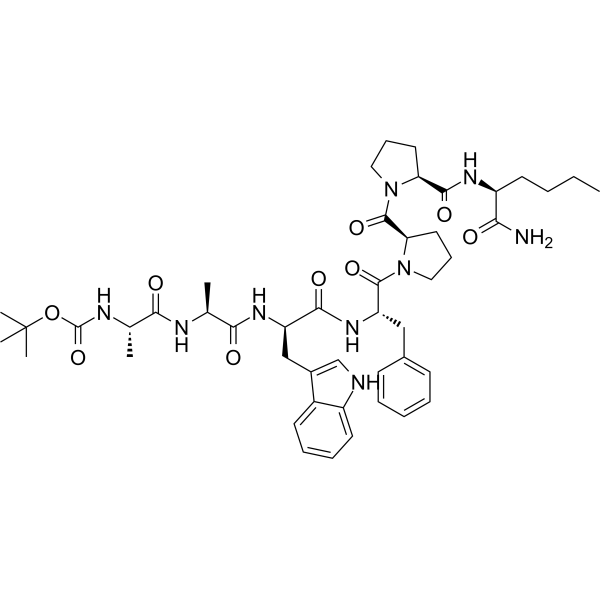
-
- HY-119577
-
|
Distigmine dibromide
|
Cholinesterase (ChE)
|
Neurological Disease
|
|
Ubretid is a potent inhibitor of plasma cholinesterase. Ubretid therefore delays the hydrolysis of suxamethonium and prolongs its action, similar to the effects shown by other anticholinesterase agents, such as pyridostigmine and donepezil. Ubretid has the potential for the research of urinary retention prolongs the effect of suxamethonium. Ubretid is commonly prescribed for the research of myasthenia gravis and for difficulty in emptying the bladder .
|
-
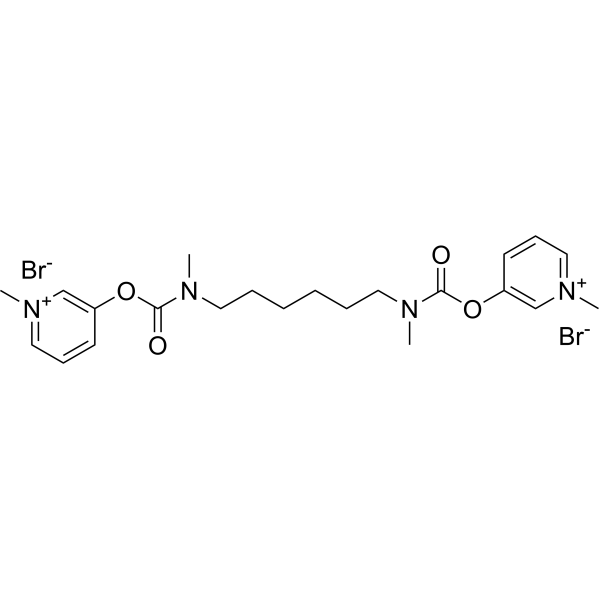
-
- HY-16489A
-
|
|
mAChR
Calcium Channel
|
Neurological Disease
|
|
Terodiline hydrochloride is an M1-selective muscarinic receptor (mAChR) antagonist with Kbs of 15, 160, 280, and 198 nM in rabbit vas deferens (M1), atria (M2), bladder (M3) and ileal muscle (M3), respectively. Terodiline hydrochloride also is a Ca 2+ blocker. Terodiline hydrochloride acts as a treatment for urinary frequency and urge incontinence .
|
-

-
- HY-W008634
-
|
|
Toll-like Receptor (TLR)
|
Cancer
|
|
Bropirimine is a synthetic agonist for toll-like receptor 7 (TLR7). Bropirimine inhibits differentiation of osteoclast precursor cells into osteoclasts via TLR7-mediated production of IFN-β. Bropirimine is an orally active immunomodulator that has demonstrated anticancer activity in transitional cell carcinoma in situ (CIS) in both the bladder and upper urinary tract .
|
-
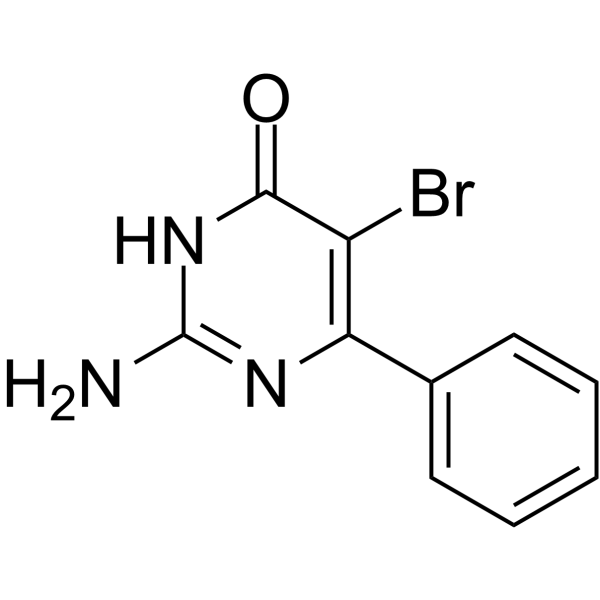
-
- HY-P1016
-
|
|
Endothelin Receptor
|
Cardiovascular Disease
|
|
BQ-3020 is a selective endothelin receptor (ETB receptor) agonist that displaces [ 125I] ET-1 binding to ETB receptors, with an IC50 value of 0.2 nM. BQ-3020 elicits vasoconstriction in the rabbit pulmonary artery. BQ-3020 makes relaxation of the pig urinary bladder neck and can be used for cardiovascular disease research 1 2.
|
-
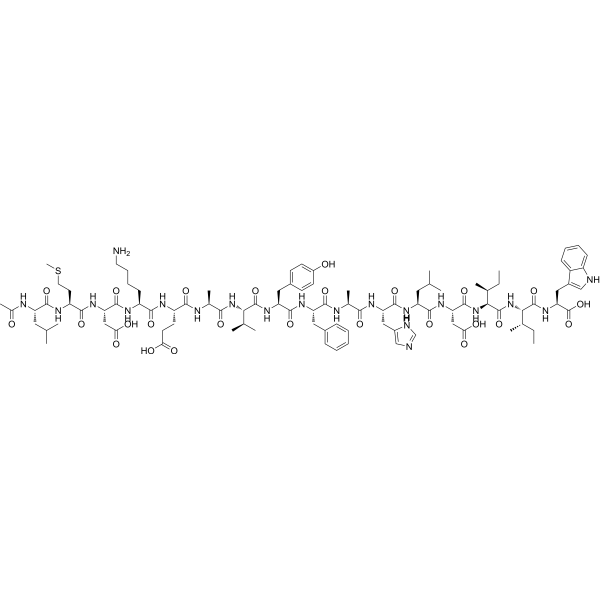
-
- HY-B0461
-
|
|
mAChR
|
Neurological Disease
|
|
Trospium chloride is an orally active, specific and competitive antagonist of muscarinic cholinergic receptors (mAChRs), with antimuscarinic activity. Trospium chloride binds to muscarinic receptors M1, M2 and M3 with high affinity, but not nicotinic, cholinergic receptors .
|
-

-
- HY-N0584B
-
|
6-Hydroxyhyoscyamine hydrochloride
|
Adrenergic Receptor
|
Inflammation/Immunology
|
|
Anisodamine hydrochloride is an anticholinergic and α1 adrenergic receptor antagonist. Anisodamine hydrochloride can be used for improving blood flow in circulatory disorders such as septic shock, Anisodamine hydrochloride displays a spectrum of pharmacological effects similar to Atropine (HY-B1205) and Sopolamine (HY-B2065) including inhibition of salivation, gastrointestinal and sweat secretion, gastrointestinal motility, respiratory secretion and urinary bladder contraction in vivo .
|
-
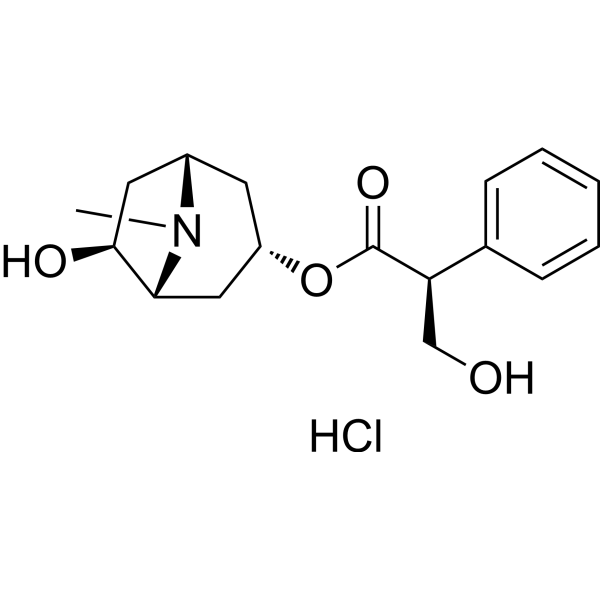
-
- HY-P1016B
-
|
|
Endothelin Receptor
|
Cardiovascular Disease
|
|
BQ-3020 ammonium is a selective endothelin receptor (ETB receptor) agonist. BQ-3020 ammonium inhibits [ 125I] ET-1 binding to ETB receptors, with an IC50 value of 0.2 nM. BQ-3020 ammonium elicits vasoconstriction in the rabbit pulmonary artery. BQ-3020 ammonium makes relaxation of the pig urinary bladder neck and can be used for cardiovascular disease research . .
|
-
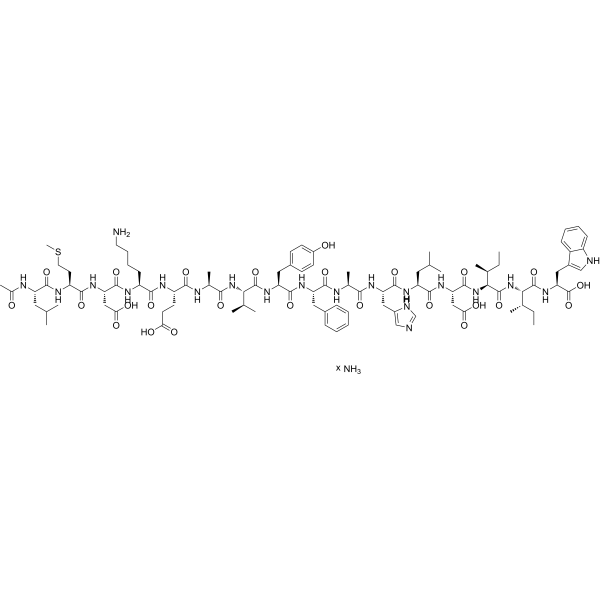
-
- HY-146358
-
|
|
Microtubule/Tubulin
|
Cancer
|
|
Anticancer agent 49 (compound 69) is a broad spectrum anticancer agent. Anticancer agent 49 inhibits tubulin polymerization. Anticancer agent 49 shows antiproliferative activity. Anticancer agent 49 has the potential for the research of solid and hematological tumors .
|
-
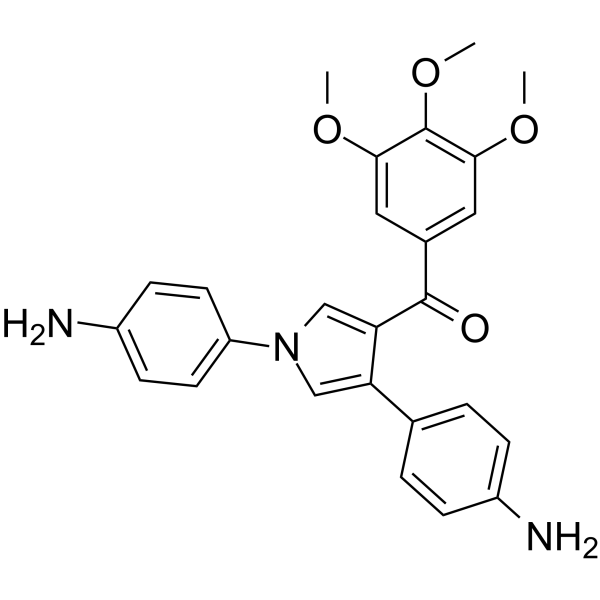
-
- HY-146357
-
|
|
Microtubule/Tubulin
|
Cancer
|
|
Anticancer agent 48 (compound 48) is a broad spectrum anticancer agent. Anticancer agent 48 inhibits tubulin polymerization. Anticancer agent 48 shows antiproliferative activity. Anticancer agent 48 shows antitumor activity in vivo. Anticancer agent 48 has the potential for the research of solid and hematological tumors .
|
-
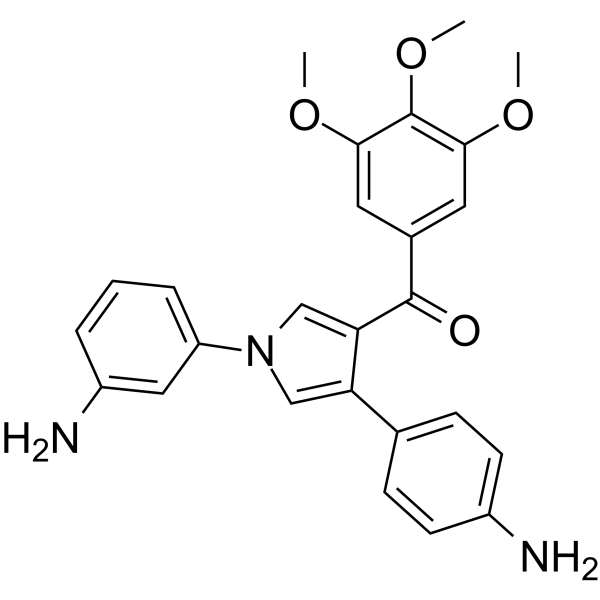
-
- HY-B0985
-
|
|
TRP Channel
|
Neurological Disease
|
|
Phenazopyridine hydrochlorideis a competitive SARM1 inhibitor, with IC50 145 μM. Phenazopyridine hydrochlorideis a TRPM8 antagonist. Phenazopyridine hydrochloride has a local anesthetic/analgesic effect. Phenazopyridine hydrochlorideis used to relieve painful symptoms of conditions such as cystitis and urethritis. Phenazopyridine hydrochloridecan promote neuronal differentiation and can also be used in the study of traumatic brain injury, peripheral neuropathy and neurodegenerative diseases .
|
-
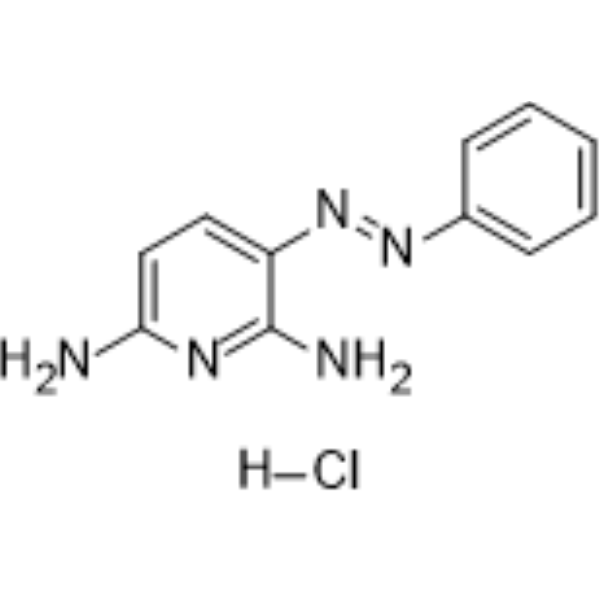
| Cat. No. |
Product Name |
Target |
Research Area |
-
- HY-P1494
-
-
- HY-P0004
-
|
Lysine vasopressin; [Lys8]-Vasopressin
|
Adenylate Cyclase
|
Others
|
|
Lysipressin (Lysine vasopressin) is antidiuretic hormone that have been found in pigs and some marsupial families. Lysipressin induces contraction of the rabbit urinary bladder smooth muscle, activate adenylate-cyclase .
|
-
- HY-P0004A
-
|
Lysine vasopressin acetate; [Lys8]-Vasopressin acetate
|
Adenylate Cyclase
|
Others
|
|
Lysipressin (Lysine vasopressin) acetate is antidiuretic hormone that have been found in pigs and some marsupial families. Lysipressin acetate induces contraction of the rabbit urinary bladder smooth muscle, activate adenylate-cyclase .
|
-
- HY-P5155
-
|
|
Potassium Channel
|
Neurological Disease
|
|
Stromatoxin 1 is an inhibitor of Potassium Channel, a peptide which can be isolated from tarantulas. Stromatoxin 1 selectively inhibits K(V)2.1, K(V)2.2, K(V)4.2, and K(V)2.1/9.3 channels. K(V)2.1 and K(V)2.2, but not K(V)4.2, channel subunits play a key role in opposing both myogenic and neurogenic urinary bladder smooth muscle (UBSM) contractions in rats .
|
-
- HY-P3799
-
|
|
Neurokinin Receptor
|
Neurological Disease
|
|
[Glp6] Substance P (6-11) is an analogue of substance P (6-11). Substance P (6-11) stimulates [3H]-inositol monophosphate ([3H]-IP1) formation in rat urinary bladder by acting on the 'septide-sensitive' tachykinin receptors .
|
-
- HY-P3853
-
|
|
Neurokinin Receptor
|
Neurological Disease
|
|
GR 87389 is a potent NK2 receptor antagonist. GR 87389 antagonized GA 64349-induced smooth muscle strips contractions in a competitive manner in the human detrusor, prostate and prostatic urethra .
|
-
- HY-P1016
-
|
|
Endothelin Receptor
|
Cardiovascular Disease
|
|
BQ-3020 is a selective endothelin receptor (ETB receptor) agonist that displaces [ 125I] ET-1 binding to ETB receptors, with an IC50 value of 0.2 nM. BQ-3020 elicits vasoconstriction in the rabbit pulmonary artery. BQ-3020 makes relaxation of the pig urinary bladder neck and can be used for cardiovascular disease research 1 2.
|
-
- HY-P1016B
-
|
|
Endothelin Receptor
|
Cardiovascular Disease
|
|
BQ-3020 ammonium is a selective endothelin receptor (ETB receptor) agonist. BQ-3020 ammonium inhibits [ 125I] ET-1 binding to ETB receptors, with an IC50 value of 0.2 nM. BQ-3020 ammonium elicits vasoconstriction in the rabbit pulmonary artery. BQ-3020 ammonium makes relaxation of the pig urinary bladder neck and can be used for cardiovascular disease research . .
|
| Cat. No. |
Product Name |
Category |
Target |
Chemical Structure |
| Cat. No. |
Product Name |
Chemical Structure |
-
- HY-116408AS
-
|
|
|
Propiverine-d7 (hydrochloride) is the deuterium labeled Propiverine hydrochloride. Propiverine hydrochloride is a bladder spasmolytic with calcium antagonistic and anticholinergic properties. Propiverine hydrochloride can be used for the research of overactive blaqdder and urinary incontinence[1][2].
|
-

-
- HY-119419S
-
|
|
|
Pirimicarb-d6 is the deuterium labeled Diuron. Diuron is a phenylurea herbicide that inhibits photosynthesis by preventing the formation of ATP and NADH. Diuron (2,500 ppm, dietary) increases the incidence of urinary bladder urothelial carcinomas in male
|
-

Your information is safe with us. * Required Fields.
Inquiry Information
- Product Name:
- Cat. No.:
- Quantity:
- MCE Japan Authorized Agent:



























![[Glp6] Substance P (6-11)](http://file.medchemexpress.com/product_pic/hy-p3799.gif)














